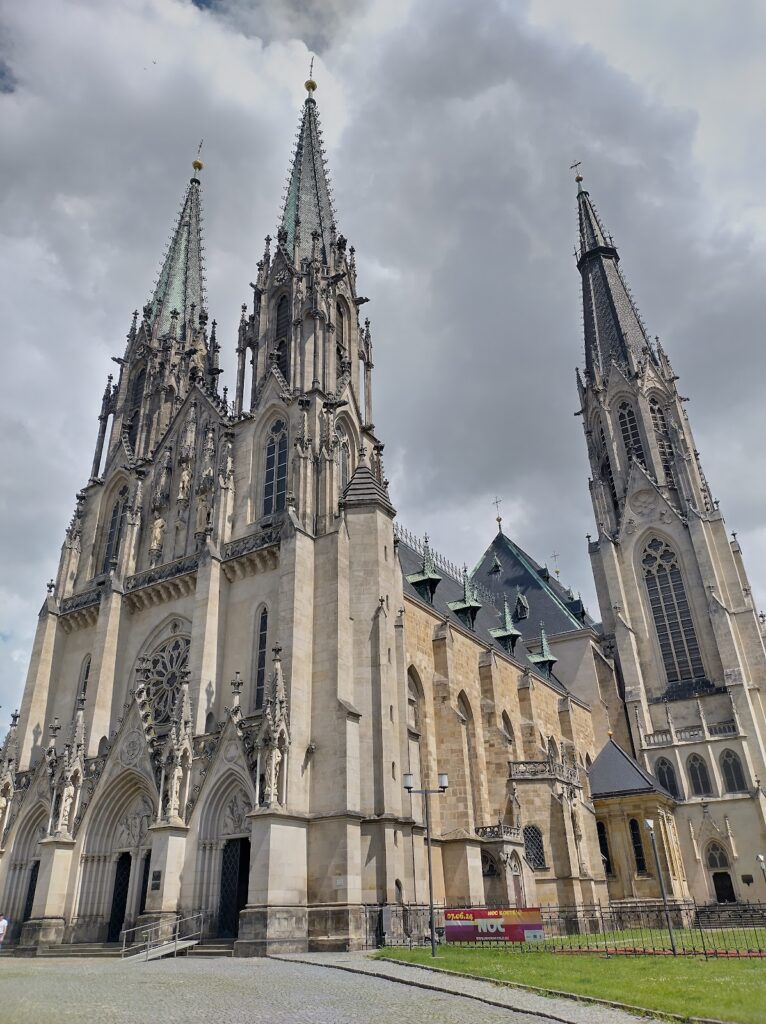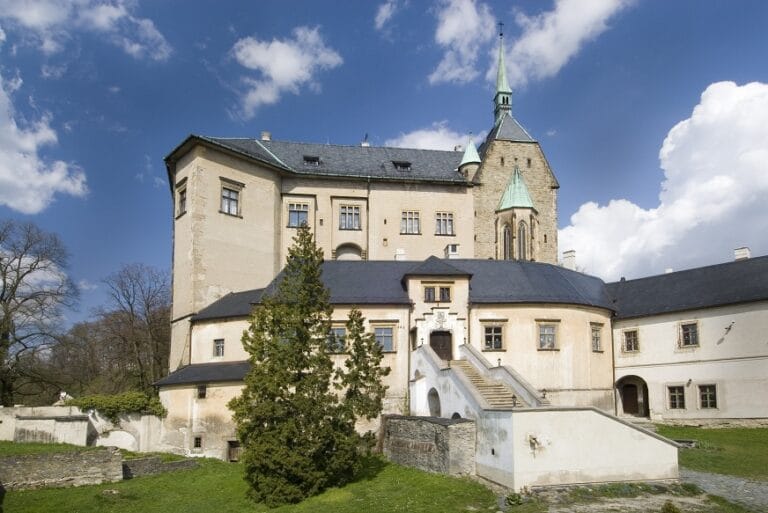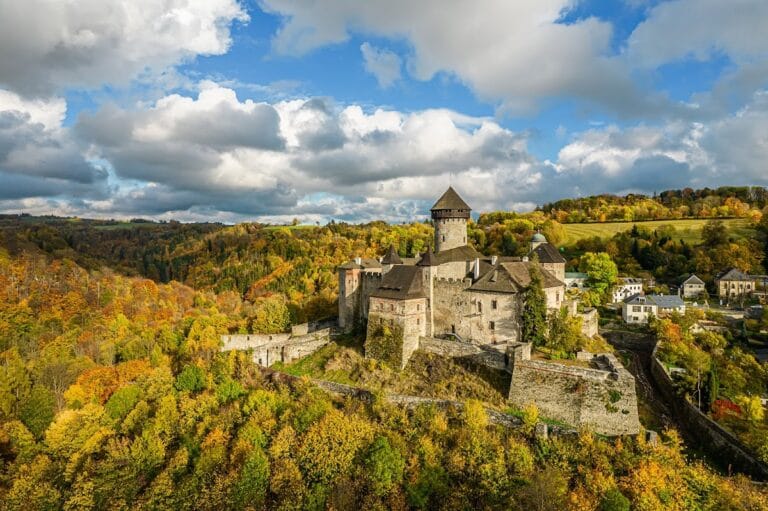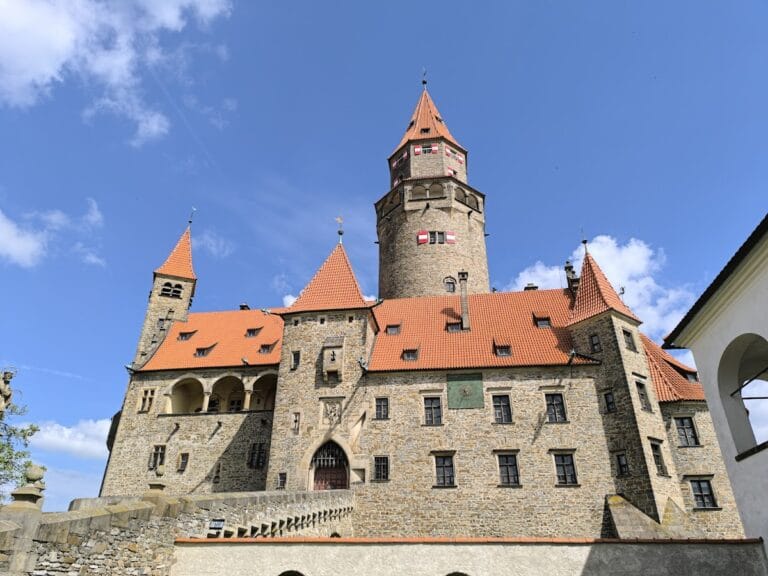Olomouc Castle: A Historic Fortress and Ecclesiastical Center in the Czech Republic
Visitor Information
Google Rating: 4.7
Popularity: Low
Google Maps: View on Google Maps
Official Website: www.muo.cz
Country: Czechia
Civilization: Unclassified
Remains: Military
History
Olomouc Castle is situated in the municipality of Olomouc, in the modern Czech Republic. Its origins trace back to a fortified settlement established by the Great Moravian civilization, an early medieval Slavic state active in Central Europe.
The site shows evidence of human presence from prehistoric times, with archaeological layers reflecting at least three distinct periods: the Eneolithic (Copper Age), the Late Bronze Age associated with the Věteřov culture, and the Hallstatt period which corresponds to the early Iron Age. These ancient occupations set the foundation for the castle’s later historic importance.
During the late 8th century, the settlement on Václavský Hill began to take on strategic significance, as indicated by the discovery of ceramics and weapons attributed to the Great Moravian culture. Following the decline of Great Moravia in the early 10th century, the fortification continued evolving, eventually reaching its zenith in the latter half of that century as a stronghold commanding an important long-distance route across Moravia. Around the middle of the 11th century, the fortress was reconstructed in stone, a sign of growing political and military stability. This stone fortress served as the residence of the Přemyslid dynasty’s appanage princes who governed Olomouc.
The first known written record of Olomouc Castle dates to 1055 in the “Chronica Boemorum,” a Bohemian chronicle. Shortly after, in 1063, the bishopric of Olomouc was established, linking the site closely to ecclesiastical administration. The castle’s main church at that time was dedicated to St. Mary Magdalene but was replaced by the newly consecrated cathedral dedicated to St. Wenceslaus in 1131. Alongside the cathedral, the bishop’s palace known today as Zdíkův palác was constructed, marking the castle’s role as a center of both religious authority and governance.
In 1306, Olomouc Castle was the location of a significant event when Wenceslaus III of Bohemia was assassinated, an event that brought the Přemyslid ruling dynasty to an end. This moment underscores the castle’s involvement in the turbulent politics of medieval Bohemia and Moravia.
Over the centuries, Olomouc Castle underwent a series of architectural transformations reflecting changing styles and functions. The 13th century saw Gothic modifications to the cathedral, followed by a Renaissance rebuilding of the chapter house in the early 1500s. The Baroque period brought substantial alterations during the 17th and 18th centuries, and in the 19th century, Neo-Romanesque features were added, including a chapel. From the early 16th century onward, the castle complex became closely associated with the capitular deanery, reinforcing its religious and administrative significance.
In the 20th century, the site became a focus of extensive archaeological and art historical research carried out between 1972 and 1995. These investigations recovered around 20,000 early medieval artifacts, which are now preserved in the Olomouc Regional Museum. Recognizing its historical and cultural value, Olomouc Castle was declared a national cultural monument in 1962 and later honored with the European Heritage Label in 2015.
Remains
Olomouc Castle covers an elongated area roughly 200 meters in length and up to 80 meters in width. Originally encircled by a stone defensive wall, the complex was arranged as a fortified hilltop enclosure designed to shelter many inhabitants. Buildings and structures were positioned around a central open space known today as Václavské náměstí (Wenceslaus Square), aligning roughly with the cardinal directions.
On the eastern side stand the St. Wenceslaus Cathedral and the bishop’s palace, known as Zdíkův palác. The palace features a rectangular layout and includes a distinctive cylindrical stone tower. Archaeological excavation has revealed Romanesque elements here, including a window above the palace entrance and a round tower associated with the Chapel of St. Barbara, signifying early medieval construction techniques using substantial stone blocks.
Within the complex’s southern portion, the bell-ringers’ house, rebuilt in the mid-19th century under architect Franz Kottas, sits alongside chapels and artist studios. Notably, the Neo-Romanesque Chapel of the Virgin Mary Opatrovnice was erected in the late 19th century on the site formerly occupied by a castle house. Nearby stands the Church of St. Anna, contributing to the religious character of the castle grounds.
To the west lie residential buildings connected to the clergy, such as the parsonage, the vicar’s residence, and the notary’s residence. The northern area includes the chapter deanery and further chapels, forming the administrative heart linked to the ecclesiastical governance of the bishopric. An economic courtyard within this section now houses the Archdiocesan Museum.
The castle’s fortifications are composed primarily of robust stone walls and towers built to defend and control the surrounding region. Among the artifacts uncovered during archaeological work are Romanesque remnants of the castle walls and a variety of bronze fittings and gilded decorative motifs. Pottery shards from the early medieval period bear distinctive engobe (a type of slip or coating) decorations, while bronze weapons and fittings attest to contacts with neighboring regions like Poland and Bohemia, indicating the site’s role in wider cultural exchanges.
A Baroque statue of St. John of Nepomuk, created in 1724 by sculptor Jiří Antonín Heinz, stands within the complex, representing later artistic additions. The continuity of religious functions is also visible in several chapels and sacred buildings throughout the site.
Today, many of these archaeological remains survive either partially restored or preserved in situ, offering tangible links to the castle’s long and layered history. The combination of defensive architecture, religious structures, and residential buildings reflects Olomouc Castle’s multifaceted role as a political, ecclesiastical, and military center over the course of a millennium.










